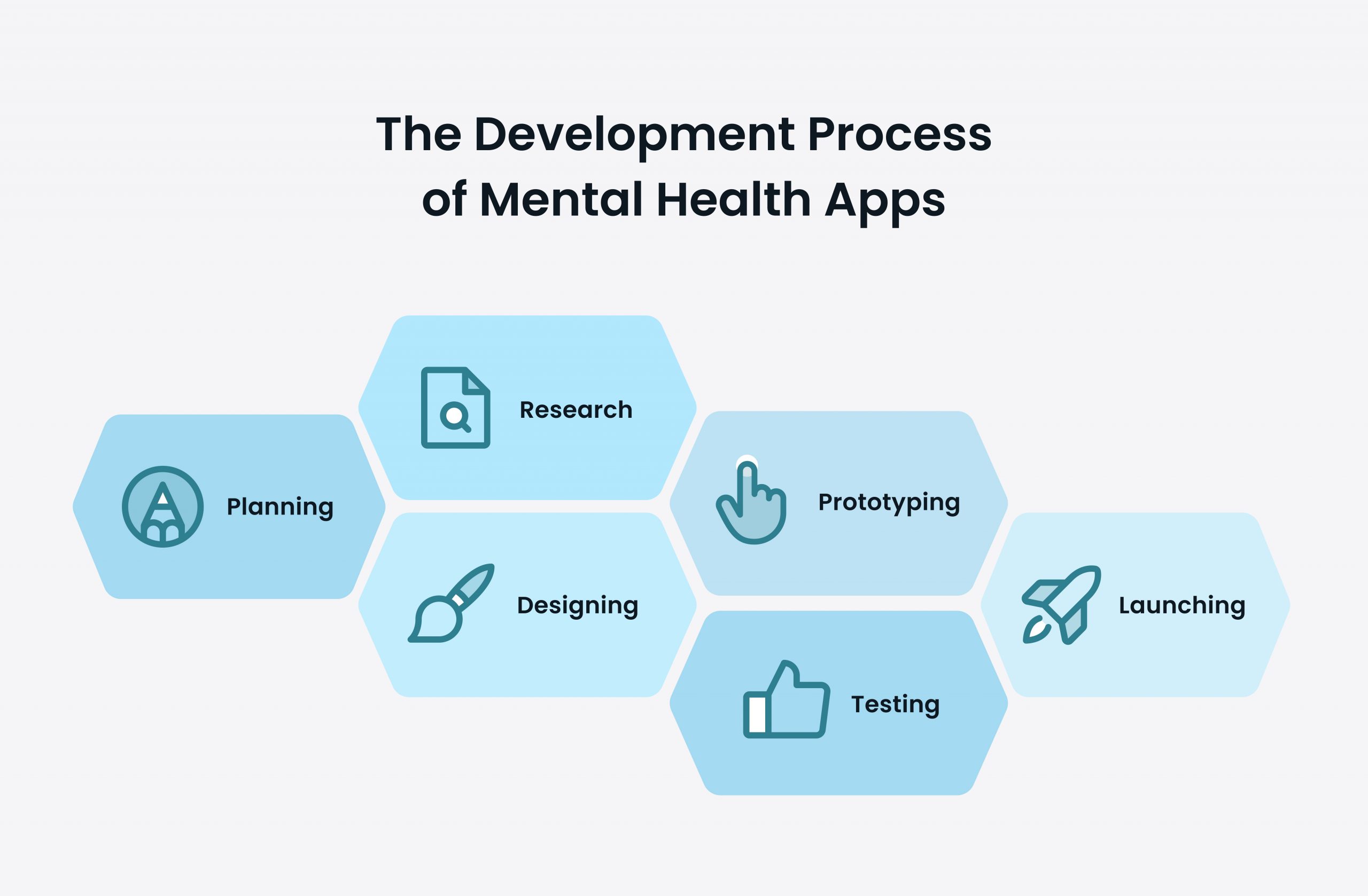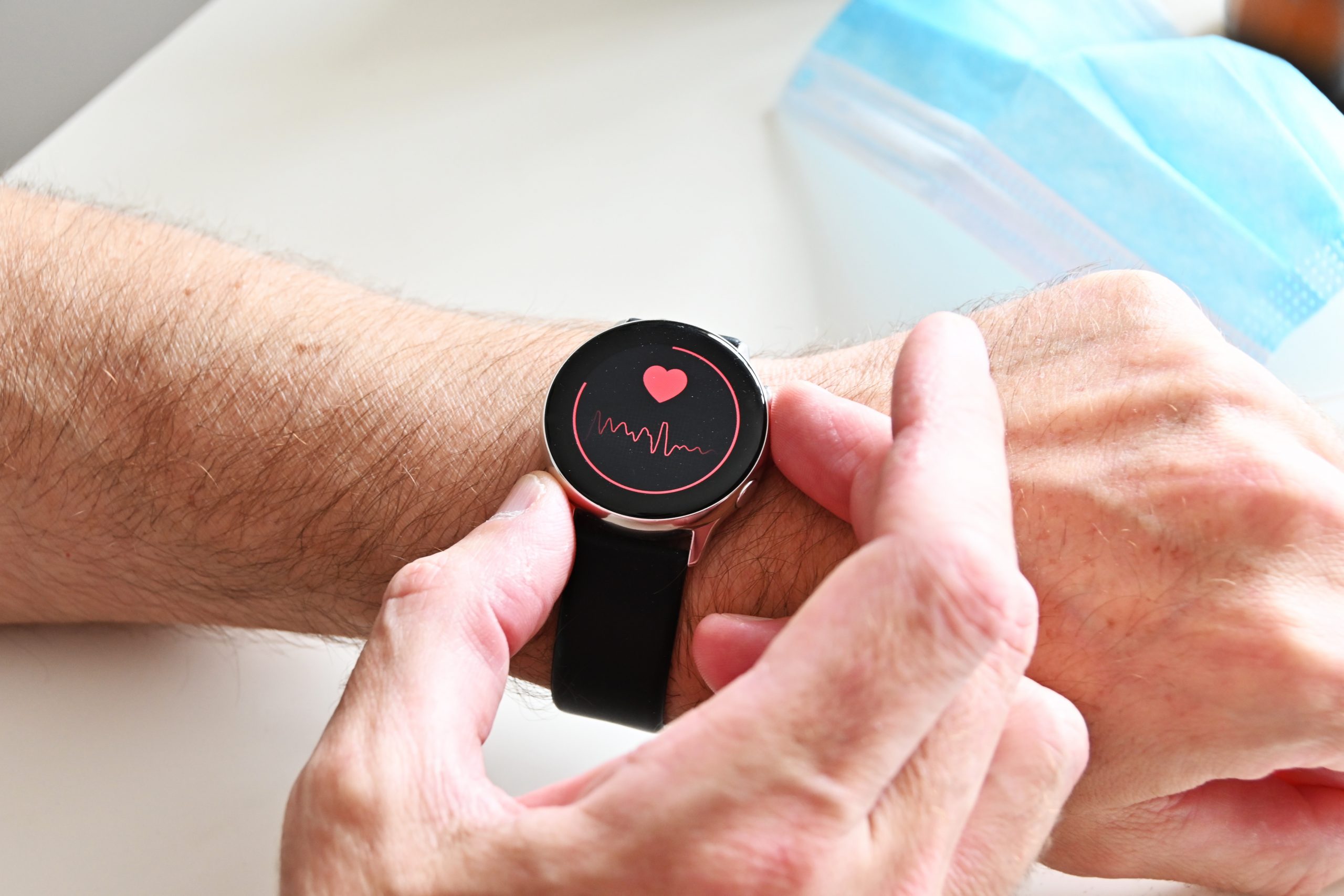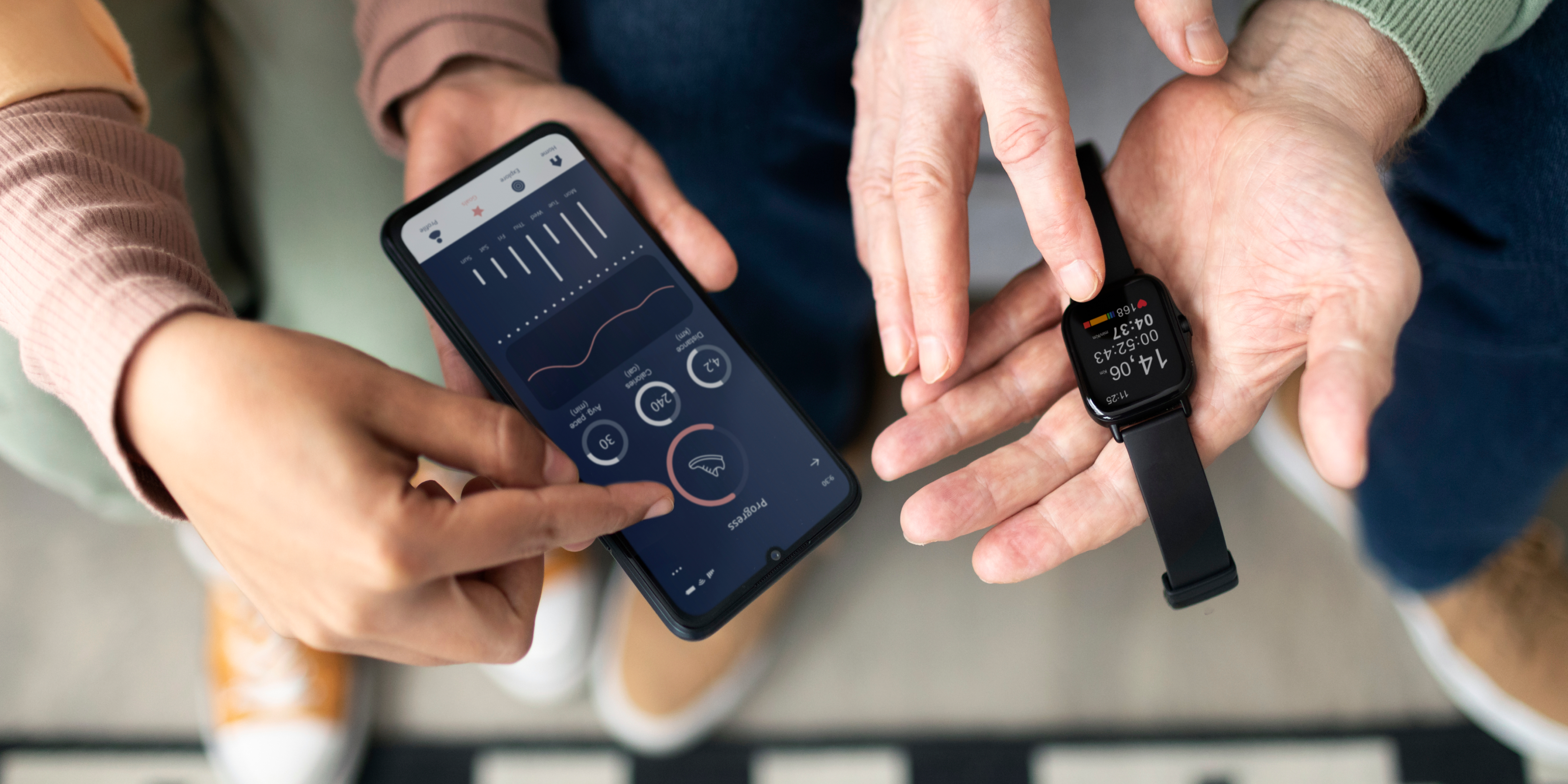Unlock the complexities of developing mental health apps and navigate the associated costs. In this article, explore the significance of mental health apps, factors influencing development costs, and strategies for funding and monetization.
Key Takeaways:
- Mental Health App Importance: Discover the pivotal role mental health apps play in providing accessible support, tracking progress, and connecting users with virtual therapists.
- Technology’s Impact: Learn how technology revolutionizes mental health management, offering features like mood tracking, journaling, and guided meditation for active user participation.
- Development Cost Factors: Delve into the factors influencing the cost of mental health app development, including app complexity, design, compliance, and security measures.
- Development Process: Understand the comprehensive stages of mental health app development, from planning and research to testing, launching, and continuous updates.
- Cost Estimation: Gain insights into estimating the cost of mental health app development, considering hiring, maintenance, marketing, security, and platform-specific expenses.
- Funding and Monetization: Explore strategies such as seeking investors, in-app purchases, subscriptions, and advertising to secure funding and ensure sustainable monetization.
- Future Trends: Look into emerging trends like virtual reality therapy, wearable devices, and AI’s impact, shaping the future landscape of mental health technology.
The Importance of Mental Health Apps
Mental health apps play a vital role in bridging the gap in mental health services. With the increasing demand for mental health support, these apps have become a valuable resource for individuals seeking assistance. They provide a means to track mental health progress, access therapy exercises, and connect with therapists on a virtual platform.
Bridging the Gap in Mental Health Services
Mental health services are often difficult to access due to a shortage of mental health professionals or barriers such as cost and stigma. This lack of accessibility can have detrimental effects on individuals who are in need of support. However, mental health apps address these challenges by offering a user-friendly and cost-effective alternative.
Imagine a scenario where someone is struggling with anxiety but is unable to find a therapist in their area. This person may feel isolated and helpless, unable to access the support they desperately need. However, with the advent of mental health apps, individuals can conveniently access resources and support whenever they need it, breaking down the barriers to seeking help.
These apps provide a platform where users can connect with licensed therapists through video calls or messaging, allowing for remote therapy sessions. This virtual platform eliminates the need for physical proximity, making mental health services accessible to individuals regardless of their location.
The Role of Technology in Mental Health Management
Technology has revolutionized the way we manage our mental health. Mental health apps utilize various features such as mood tracking, journaling, and guided meditation to enhance mental well-being. These features empower individuals to actively participate in their own mental health management.
For example, mood tracking allows users to monitor their emotions and identify patterns or triggers that may impact their mental well-being. By keeping a record of their moods, individuals can gain valuable insights into their emotional well-being and make informed decisions about their mental health.
Journaling is another powerful tool offered by mental health apps. It provides a safe space for individuals to express their thoughts and feelings without judgment. Writing down one’s thoughts can help reduce stress, improve self-awareness, and promote emotional healing.
Guided meditation is yet another feature that mental health apps offer. Meditation has been proven to reduce stress, anxiety, and depression. By providing guided meditation exercises, these apps enable individuals to practice mindfulness and achieve a state of relaxation.
From our experience as a software development company with a proven track record, we have witnessed the transformative effects of technology in empowering individuals to take control of their mental well-being. Mental health apps have the potential to revolutionize the way we approach mental health, making support and resources more accessible to everyone.
Factors Influencing the Cost of Mental Health App Development
Several factors contribute to the overall cost of developing a mental health app. Understanding these factors is essential for entrepreneurs, CTOs, and CEOs who are considering investing in such an endeavor.
Developing a mental health app involves careful consideration of various aspects, each of which plays a vital role in determining the overall cost. Let’s delve deeper into some of the key factors that influence the cost of mental health app development.
App Complexity and Features
The complexity and number of features integrated into the app significantly influence the development cost. Mental health apps that aim to provide comprehensive support and assistance to users often require advanced functionalities. For instance, incorporating AI-powered chatbots can enhance the app’s ability to provide personalized recommendations and support. Similarly, integrating machine learning algorithms and data analysis capabilities can help in identifying patterns and trends in user behavior, leading to more effective interventions.
However, it is important to strike a balance between functionality and cost to ensure the app remains user-friendly and intuitive. While advanced features can enhance the app’s effectiveness, it is crucial to prioritize the core functionalities that align with the app’s purpose and target audience.
Design and User Interface
The design and user interface of a mental health app are crucial for user engagement and satisfaction. Developing an aesthetically pleasing and user-friendly interface requires skilled designers and developers, which can increase the development costs. However, investing in a well-designed app can significantly impact user experience and attract more users, ultimately contributing to the success of the app.
Creating an intuitive and visually appealing user interface involves careful consideration of color schemes, typography, and overall layout. Additionally, incorporating user-centered design principles and conducting usability testing can help in identifying areas for improvement, ensuring a seamless user experience.
Compliance and Security Measures
Mental health apps deal with sensitive user data, making compliance with privacy regulations and implementing robust security measures paramount. Ensuring compliance with regulations such as the Health Insurance Portability and Accountability Act (HIPAA) is crucial to protect user privacy and avoid legal complications. Implementing measures to safeguard user data from potential breaches, such as encryption and secure authentication protocols, also increases development costs.
However, prioritizing data protection instills trust in users, encouraging wider adoption of the app. Users are more likely to engage with an app that demonstrates a commitment to safeguarding their personal information, especially in the context of mental health, where privacy and confidentiality are of utmost importance.
Considering these factors and their impact on the overall cost of mental health app development is essential for making informed decisions. By carefully assessing the complexity, features, design, user interface, and security measures, entrepreneurs and stakeholders can ensure the successful development of a mental health app that meets the needs of its users.
The Development Process of Mental Health Apps
Developing a mental health app involves several stages, each requiring careful planning and execution to ensure a successful product.

When it comes to mental health apps, the development process is not just about coding and designing. It is a comprehensive journey that involves understanding the needs of the target audience, conducting extensive research, and incorporating the latest trends in mental health technology.
Planning and Research
At the initial stage, extensive planning and research are conducted to identify the target audience, define app features, and analyze market trends. This stage is crucial for establishing a strong foundation for the app and determining the development requirements accurately.
The planning phase involves brainstorming sessions, where developers, designers, and mental health professionals come together to discuss the app’s purpose, goals, and functionalities. They delve deep into understanding the specific mental health issues the app aims to address and the potential benefits it can provide to users.
Market research plays a vital role in this stage. Developers analyze existing mental health apps, studying their strengths and weaknesses, and identifying gaps in the market. They also conduct surveys and interviews with potential users to gather insights and understand their needs and preferences.
Designing and Prototyping
Designing the user interface and creating interactive prototypes is a collaborative effort between designers and developers. It is imperative to create a visually appealing and intuitive app that aligns with the target users’ preferences and provides a seamless user experience.
During the design phase, designers work closely with mental health professionals to ensure that the app’s interface is user-friendly and promotes positive mental well-being. They carefully choose colors, typography, and imagery that evoke a sense of calmness and relaxation.
Prototyping is an essential step in the development process. It allows developers to create a working model of the app, enabling them to test the user interface, navigation flow, and overall functionality. Feedback from users and stakeholders is collected and incorporated into the design, ensuring that the final product meets the highest standards.
Testing and Launching
Thorough testing is conducted to identify and resolve any bugs or functionality issues. This stage ensures the app is optimized for different devices and operating systems. Once the app passes rigorous testing, it is ready for launch and distribution on various app stores.
Testing a mental health app goes beyond functional testing. It involves conducting usability tests to evaluate how users interact with the app and whether it effectively addresses their mental health needs. Feedback from users during this stage is invaluable, as it helps developers fine-tune the app and make necessary improvements.
Launching a mental health app requires careful planning and marketing strategies. Developers work closely with marketing teams to create compelling app descriptions, screenshots, and promotional materials. They also collaborate with mental health professionals and influencers to raise awareness about the app and reach the target audience effectively.
Once the app is launched, developers closely monitor user feedback and analytics to identify areas for improvement and implement updates accordingly. Continuous updates and enhancements are crucial to ensure the app remains relevant and effective in supporting users’ mental well-being.
Estimating the Cost of Mental Health App Development
Estimating the cost of mental health app development involves considering various factors that contribute to the overall expenses. However, it is important to delve deeper into these factors to gain a comprehensive understanding of the costs involved.
The cost of mental health app development is influenced by factors like app complexity, design, and security measures. Strategies for funding include seeking investors and grants, implementing in-app purchases, subscriptions, and advertising partnerships. Monetization involves balancing user value and revenue generation.
One of the major contributors to the cost of mental health app development is the hiring of a development team. Engaging a skilled and experienced team is essential for successful app development. The cost of hiring developers, designers, quality assurance specialists, and project managers depends on their expertise and the project’s complexity. It is crucial to find professionals who have a deep understanding of mental health and can create an app that caters to the specific needs of users.
Another aspect to consider when estimating the cost of mental health app development is the maintenance and update costs. Building a mental health app is an ongoing process that requires continuous maintenance and updates. This ensures the app remains compatible with evolving operating systems and incorporates new features to meet user needs. Factoring in maintenance and update costs is integral to maintain the app’s functionality and relevance. Regular updates also help in addressing any bugs or issues that may arise, ensuring a seamless user experience.
Furthermore, marketing and promotion costs are an important consideration. Once the app is developed, effective marketing and promotion strategies are necessary to attract users and drive app adoption. Allocating budget for marketing initiatives is essential to create awareness and increase user acquisition. This may include app store optimization, social media campaigns, and partnerships with mental health organizations. Collaborating with mental health professionals and organizations can help in establishing credibility and reaching the target audience effectively.
Additionally, it is important to consider the cost of ensuring data security and privacy. Mental health apps deal with sensitive user information, and it is crucial to invest in robust security measures to protect user data. This may involve implementing encryption techniques, conducting regular security audits, and complying with relevant data protection regulations.
Moreover, user support and customer service costs should also be taken into account. Providing prompt and efficient customer support is essential for maintaining user satisfaction and addressing any concerns or issues that may arise. Allocating resources for a dedicated support team or implementing a chatbot system can help in providing timely assistance to users.
Lastly, it is worth mentioning that the cost of mental health app development can vary depending on the platform chosen. Developing an app for both iOS and Android platforms may incur additional expenses, as it requires separate development and testing processes.
In conclusion, estimating the cost of mental health app development involves considering various factors such as hiring a development team, maintenance and update costs, marketing and promotion costs, data security and privacy measures, user support and customer service costs, and the chosen platform. By carefully analyzing these factors, it is possible to develop a realistic budget and ensure the successful development and launch of a mental health app.
Funding and Monetization Strategies for Mental Health Apps
Securing funding and implementing effective monetization strategies are crucial for sustaining the development and operation of mental health apps.
Developing a mental health app requires not only a deep understanding of the target audience and their needs but also a solid financial plan to support its growth and longevity. In this article, we will explore various funding and monetization strategies that entrepreneurs and app developers can consider to ensure the success of their mental health apps.
Seeking Investors and Grants
One of the most common ways to secure financial support for app development is by seeking investors and grants. Entrepreneurs and app developers can explore options such as venture capital funding, angel investors, or government grants to obtain the necessary funds.
When pitching to potential investors, it is crucial to emphasize the app’s value proposition, market potential, and long-term vision. Investors are more likely to support an app that demonstrates a clear understanding of its target audience and a plan for sustainable growth. By showcasing the app’s unique features and potential impact on mental health, entrepreneurs can attract investors who share their vision.
Government grants can also be a valuable source of funding for mental health apps. Many governments and organizations offer grants specifically for projects that promote mental well-being. These grants not only provide financial support but also validate the importance of mental health in society.
In-app Purchases and Subscriptions
Implementing in-app purchases and subscription models can be an effective way to generate revenue for mental health apps. By offering premium content, personalized coaching, or additional features through in-app purchases and subscription plans, app developers can provide users with enhanced value while generating sustainable income.
For example, a mental health app could offer a basic version of the app for free, while providing advanced features or exclusive content through in-app purchases or subscription plans. This approach allows users to experience the app’s benefits before deciding to invest in additional features or personalized support.
It is important to strike a balance between providing value to users and generating revenue. App developers should carefully consider the pricing and content offered through in-app purchases and subscriptions to ensure that users perceive the added benefits as worth the investment.
Advertising and Sponsorships
Partnering with mental health organizations, therapists, or wellness brands for advertising and sponsorships can offer an additional revenue stream for mental health apps. By featuring relevant advertisements or sponsored content within the app, developers can generate income while also providing users with valuable resources and information.
However, it is crucial to strike a balance between monetization and maintaining the app’s integrity and user trust. App developers should carefully vet potential partners to ensure that their values align with the app’s mission and that the advertisements or sponsored content are relevant and beneficial to the users.
Furthermore, developers should be transparent about any sponsored content or advertisements to maintain the trust of their user base. Clear labeling and disclosure of sponsored content can help users differentiate between organic app content and paid promotions.
In conclusion, securing funding and implementing effective monetization strategies are essential for the success and sustainability of mental health apps. By exploring options such as seeking investors and grants, implementing in-app purchases and subscriptions, and partnering with relevant organizations for advertising and sponsorships, app developers can ensure the financial viability of their mental health apps while providing valuable resources and support to users.
The Future of Mental Health Apps
Mental health apps hold immense potential in revolutionizing mental health management. Emerging trends and technological advancements continue to shape the future of these apps.
Emerging Trends in Mental Health Tech
The field of mental health technology is rapidly evolving, and new trends are constantly emerging. Virtual reality therapy, wearable devices for monitoring mental health, and personalized mental health algorithms are among the key areas of development that have the potential to provide innovative solutions for mental health management.
The Impact of AI and Machine Learning on Mental Health Apps
The integration of AI and machine learning algorithms in mental health apps opens up possibilities for personalized interventions and early detection of mental health conditions. These technologies can analyze user data, provide tailored recommendations, and track progress, enhancing the effectiveness of mental health interventions.
The Potential of Virtual Reality in Mental Health Treatment
Virtual reality (VR) has gained traction in the mental health field, offering immersive experiences for therapeutic purposes. VR has the potential to simulate challenging scenarios in a controlled environment, aiding individuals in confronting and managing their fears and anxieties.
Understanding the cost of mental health app development is crucial for entrepreneurs, CTOs, and CEOs aiming to make a positive impact in the mental health space. From designing a user-friendly interface to implementing robust security measures, each aspect comes with associated costs. We at Wesoftyou, a leading software development company, possess the expertise to guide you through the entire process, ensuring a successful outcome. Contact us for a free consultation or project estimation, and together, we can create a transformative mental health app that improves the lives of countless individuals.
FAQ
The development timeline depends on the app’s complexity and features. On average, it can take anywhere from three to six months to develop a basic mental health app, while more complex apps may take a year or longer.
Compliance with privacy regulations such as HIPAA requires implementing robust security measures to protect user data. Engaging a development team experienced in handling sensitive data and following best practices in data security is crucial.
The key features of a mental health app may include mood tracking, guided meditation, therapy exercises, journaling, virtual support groups, and connectivity with mental health professionals.
Effective marketing and promotion strategies, including app store optimization, social media campaigns, and partnerships with mental health organizations, can help attract users to your app. It is essential to create awareness about the app’s benefits and differentiate it from competitors.





















